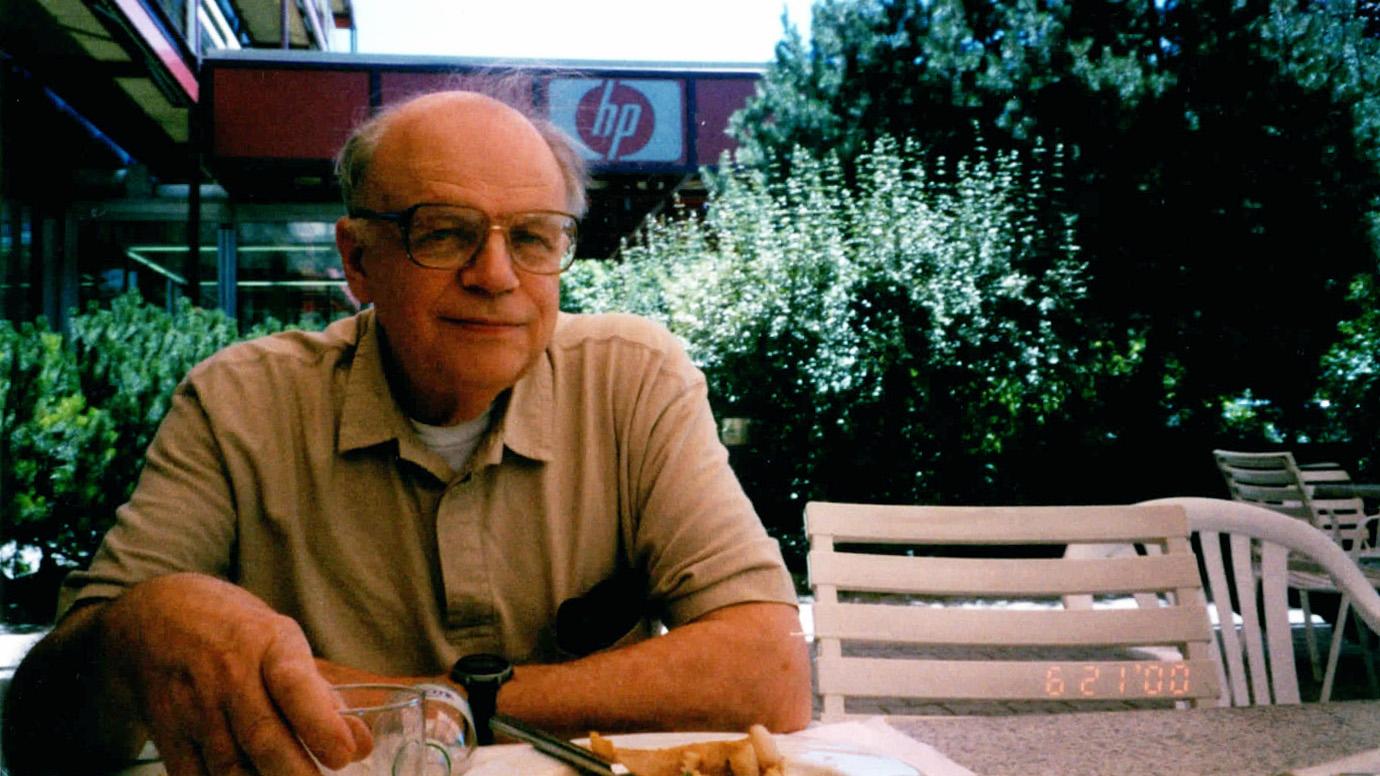Clemens C.J. Roothaan was in a Nazi concentration camp when he made his first theoretical quantum calculations—work that later would be accepted as his master’s thesis in physics.
After the war, he pursued his PhD at the University of Chicago, where he became a professor who created groundbreaking models of the electronic structure of molecules that are still used today.
Roothaan, the Louis Block Professor Emeritus of Physics and Chemistry, died June 17 at age 100.

“Clemens was a foundational figure in the field of quantum chemistry,” said R. Stephen Berry, the James Franck Distinguished Service Professor Emeritus of Chemistry, who was Roothaan’s UChicago colleague for decades. “In my mind, he is probably the person who most deserved but never received the Nobel Prize.”
“He was a pioneer in the development and application of rigorous theory to the electronic structure of atoms and molecules,” said Paul Bagus, PhD’66, a professor of chemistry at the University of North Texas and a former student of Roothaan’s. “He was a true giant in our discipline.”
Born Clemens Carel Johannes Roothaan in Nijmegen in the Netherlands in 1918, Roothaan was studying physics at university when World War II broke out. As a Catholic citizen, he was temporarily allowed to continue studying, but his brother Vic become involved with the Dutch Resistance, and one night, the Nazis came to the house looking for him. They didn’t find Vic, but took Roothaan and his younger brother Jan instead. Both were interned in the Vught concentration camp near ’s-Hertogenbosch in occupied Holland.
The nearby electronics giant Philips N.V., occupied by the Nazis, tapped the camp for labor. A small group of prisoners with scientific backgrounds were drafted for academic work; his former professors, still at the Delft Institute of Technology, worked with Philips and were able to suggest problems for Roothaan to work on to continue his physics education.
As the tide of the war began to turn, however, the prisoners were moved to the Sachsenhausen concentration camp in Germany, where conditions were much harsher. As the Allies approached in 1945, his brother Jan was sent to Bergen-Belsen, where he died of typhus; Roothaan was sent on a death march to the Baltic Sea, from which he was rescued by incoming American troops.
Roothaan emigrated to the U.S. on a Guggenheim fellowship to continue his studies at the University of Chicago, where he received his PhD in 1950 and became a professor in 1952.
“In my mind, he is probably the person who most deserved but never received the Nobel Prize.”
At UChicago he worked closely with Robert Mulliken, a physicist and chemist who would receive the Nobel Prize for his work in 1966. Mulliken was investigating how electrons behave within the orbitals of molecules, which determines how chemicals behave. Scientists encountering these problems in the 1930s found them far too complex to do by hand. But as digital computing began to blossom in the 1950s and ‘60s, Roothaan demonstrated a nearly preternatural talent for translating these mathematics into computation.
Puzzling over the organization of molecular orbital calculations, Roothaan went with a group of friends, including his future wife, to an open-air concert by the Chicago Symphony Orchestra in Ravinia Park. “Lying in the grass, listening to the music and looking at the stars,” he later recounted, “it suddenly flashed through my head that standard MO theory did not start with the right question.”
From this insight Roothaan developed a fundamental model for how to compute the structures of atoms and molecules which became the standard for the field. “Refinements have been made, but his is still the central fundamental starting point of how you model atomic structures,” Berry said.
Roothaan wrote a seminal paper on the subject for the Reviews of Modern Physics, which was consistently listed among the journal’s most cited papers (it continues to be cited today, nearly 70 years later). “That paper was the one that everybody who ever wanted to do any work in that field had to read and master,” Berry said. The result became known as the Roothaan equations.
For decades, he and Mulliken also ran the Laboratory of Molecular Structure and Spectra, which helped define and shape the field of electronic structure theory and and trained a generation of scientists in the discipline.
Natural intuition for computation
Hungry for more computational power, Roothaan worked with early computers at UChicago-affiliated Argonne National Laboratory and then played a significant role in developing the University’s first computer program. He served as director of its Computation Center from 1962 to 1968, helping scientists from other fields use the computer while developing hardware and software for large-scale scientific calculations.
Berry said few people in the field could match Roothaan’s intuition for programming. “These could be enormously huge computations sometimes, and he could just sit down and write out how to do it,” he said.
After retiring from UChicago in 1988, he worked for Hewlett-Packard, where he developed the mathematical co-processor routines for the Itanium chip and served as a liaison for the computing needs of the Large Hadron Collider in Europe.

His hobbies included stamp collecting and working on the family home in Hyde Park. As his daughter Karen recalled: “His biggest single project: rewiring the house as only a physicist could.” In later years, he also rekindled an interest in music and drumming.
He was a fellow of the American Physical Society and a corresponding member of the Royal Dutch Academy of Science.
Clemens was preceded in death by his brothers Jan and Victor, sister Minnie, half-sisters Lies and Mary, half-brothers Jan and Philip, and his wife Judith (nee Cosin). He is survived by his children Karen (SB’74), John, Peter, Charles M. and Susan, as well as grandchildren Nishi, Steven, Stephanie, Maia and Oliver.
In lieu of flowers, donations may be made in Roothan’s name to the Illinois Holocaust Museum and Education Center in Skokie, Illinois.







